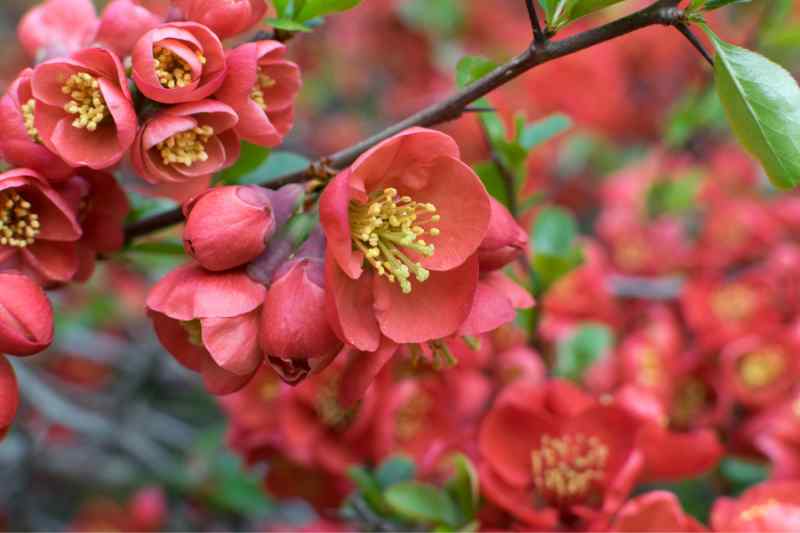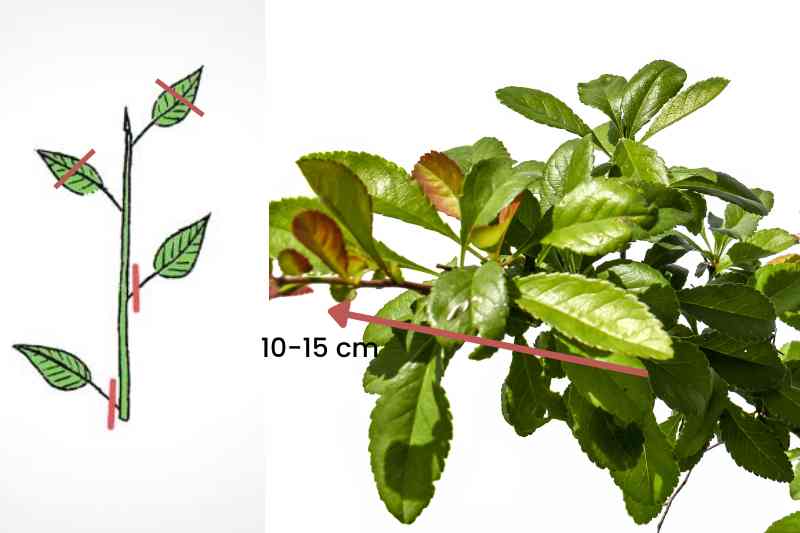Japanese quince Japanese quince, with its magnificent bright flowers, is a real gem for any garden. Did you know it can be easily multiplied by propagation by cuttings? This tutorial explains, step by step, how to propagate this bush so you can enjoy new bushes for free. Give it a try — it's within everyone's reach!
About Japanese quince
Native to Asia, or rather the Japanese quinces (Chaenomeles japonica, Chaenomeles superba and Chaenomeles speciosa) are ornamental bushes much appreciated for their bright red, pink or sometimes white flowers that open from late winter. Perfect for hedges or flowerbeds, this bush is also prized for its tart, edible fruits or for perfuming the home. Fruits of Japanese quince, although sometimes turned into jellies, are however not as good as those of true quince (Cydonia oblonga). Hardy and easy to grow, it adapts to many soil types and tolerates regular pruning well, making it an excellent option for any garden type.
Find all information about growing Japanese quince on Virginie's family sheet.

When to propagate Japanese quince?
The best time to propagate Japanese quince by cuttings is between summer and autumn, generally from July to September. During this period, semi-ripe shoots (semi-woody, semi-herbaceous) are at an ideal stage to encourage rooting.
Material needed
- Pruning shear clean and well sharpened
- Pots or buckets
- Mix of universal potting compost and sand (50/50) or special "seed and cutting compost"
- Rooting activator (facultative, but recommended)
- Plastic bag or mini-greenhouse to maintain humid atmosphere
How to propagate Japanese quince by cuttings?
- Choose right stem: take a semi-ripe shoot about 15 cm long, without flowers or fruits.
- Prepare cutting: cut just below a node (where a leaf was attached) and remove leaves from lower half of stem, leaving only a few leaves (2 to 4). Removing part of foliage helps limit water loss by evapotranspiration.
- Dip base in rooting activator to promote rooting (facultative).
- Plant cutting: push stem into mix of compost and sand (or a very light compost), leaving approximately 5 cm above substrate.
- Create mini-greenhouse: cover pot with transparent plastic bag or the bottom of a plastic bottle; or place it in a mini-greenhouse to maintain constant humidity.
please note : young plants propagated by cuttings flower in first year, unlike quinces from sowing which will not flower until about five years later. Japanese quinces can also be multiplied by layering. If eager to see cuttings flower, choose a variety from Chaenomeles speciosa, which is often slightly earlier.

Common mistakes to avoid
Although Japanese quince propagation by cuttings is accessible to all, some mistakes can compromise your efforts.
1. Choosing an unsuitable stem
- Why is this a mistake? Shoots that are too young (herbaceous) are fragile and lack stiffness to root well. Conversely, stems that are too old (woody) have hard bark and limited ability to produce new roots.
- How to avoid it? Prefer semi-ripe shoots, recognisable by texture between soft and slightly firm. These balanced stems are halfway between soft wood and hard wood.
2. Overwatering
- Why is this a mistake? Too much water suffocates roots and encourages fungi or rot, especially if substrate is not well drained.
- How to avoid it?
- Always check pot has drainage holes.
- Water moderately: substrate must remain slightly moist, never waterlogged.
- To test, insert finger into compost; if still moist deeper down, no need to water.
3. Exposing cutting to direct sunlight
- Why is this a mistake? Direct sun, especially in summer, quickly dehydrates cuttings even if substrate is moist. Young leaves are also sensitive to sunburn.
- How to avoid it? Place cuttings in bright but sheltered spot, such as near a window indoors or under a tree providing light shade outdoors.
4. Neglecting hygiene of tools and substrate
- Why is this a mistake? Diseases and bacteria spread easily via dirty tools or contaminated substrate, preventing cuttings from taking.
- How to avoid it?
- Disinfect pruning shear with methylated spirits before cutting.
- Use new or sterilised compost (sold in bags or heated in oven to eliminate pathogenous organisms).
5. Not monitoring ambient humidity
- Why is this a mistake? Too dry an atmosphere causes rapid desiccation, especially if foliage remains exposed. Conversely, excess humidity without ventilation favours mould.
- How to avoid it?
- Maintain humid environment by covering cutting with perforated plastic bag or mini-greenhouse.
- Open regularly to avoid excessive condensation and ventilate slightly.
Care for young cuttings
Ensure substrate remains always slightly moist, but not excessive to avoid rotting.
Place cuttings in a bright spot, but without direct sun.
Finally, rooting can take several weeks. Once roots are well developed (about 6 to 8 weeks), pot on cuttings into a larger pot or plant directly in ground in spring, if climatic conditions allow.
































Comments